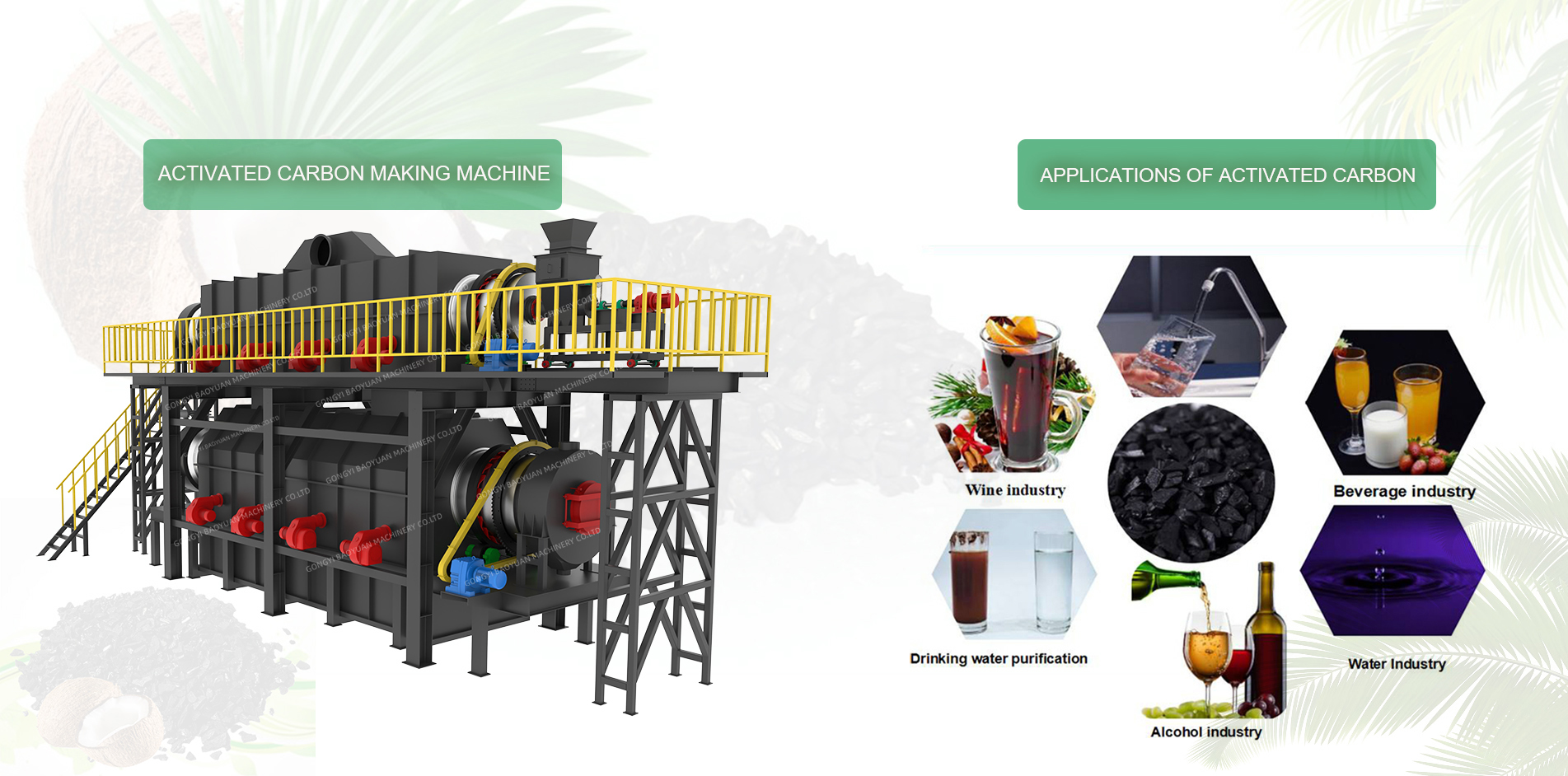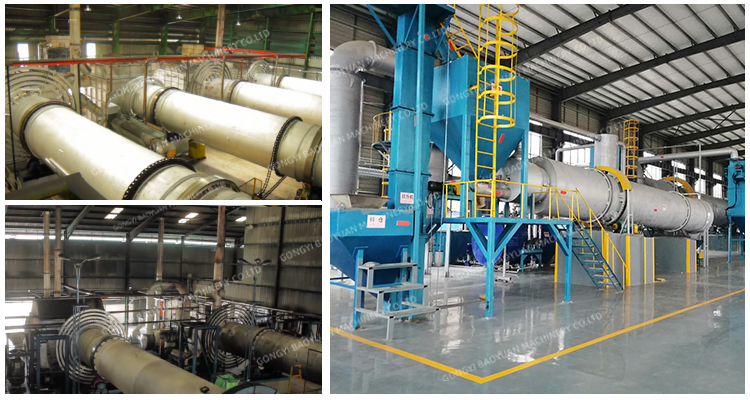EN
Language
All categories
Product ID: 68156035
Activated Coal Oven Kiln Briquette Wood Charcoal Carbonization Stove Furnace
Contact Now
Description
Product description
Products Description

Activated carbon is a specially treated carbon that heats organic raw materials (nut shells, coal, wood, etc.) in the absence of air to reduce non-carbon components (this process is called carbonization), and then reacts with gas, the surface is covered with air. Erosion, resulting in a microporous structure (this process is called activation). Since the activation process is a microscopic process, that is, the surface erosion of a large number of molecular carbides is point erosion, so the activated carbon surface has numerous tiny pores. Most of the micropore diameters on the surface of activated carbon are between 2 and 50 nm. Even a small amount of activated carbon has a huge surface area. The surface area of each gram of activated carbon is 500 to 1500 m2. Almost all applications of activated carbon are based on this feature of activated carbon. Activated carbon is divided into coconut shell activated carbon, fruit shell activated carbon, wood activated carbon and coal activated carbon from the raw materials. Activated carbon is divided into powdered activated carbon, granular activated carbon and shaped activated carbon from the shape of the finished product.
Technical Parameters
|
Product Unit Description
|
Product Range Available
|
|
Mesh Size (US Sieve)
|
Passing 100 Mesh (99%)
Passing 200 Mesh (95%) Passing 300 Mesh (90%) |
|
Surface Area(m2/g) Minimum
|
1000
|
|
Iodine (mg/g) Minimum
|
1000
|
|
Methylene Blue(ml) Minimum
|
180
|
|
Moisture (%)
|
10
|
|
Fe(%) Maximum
|
0.07-0.1
|
|
Cl(%) Maximum
|
0.1
|
The activated carbon equipment produced by our factory can produce various types of activated carbon, including coconut shell activated carbon, fruit shell activated carbon, wood activated carbon, and coal activated carbon. The production equipment is mainly composed of five parts: raw material pretreatment part, carbonization part, activation part, waste gas treatment part and deep processing part.

Product Application
Raw materials
seeds;shells and pits of tree-fruits;wood chips; bamboo;shrubby and other plant materials, the fraction of which is from 5 to 30 mm with a moisture content of not more than 15%.

|
Coconut shell
|
Walnut shell
|
Hazelnut shell
|
Wood chips
|
Bamboo
|

|
Coconut shell activated carbon
|
walnut shell activated carbon
|
Hazelnut shell activated carbon
|
Wood chips activated carbon
|
Bamboo activated carbon
|

|
Palm kernel shell
|
Pits of olives
|
Pits of date
|
Peach Shell
|
Hawthorn Seed
|

|
Palm kernel activated carbon
|
Pits of olives activated carbon
|
Pits of date activated carbon
|
Peach Shell activated carbon
|
Hawthorn Seed activated carbon
|
Working principle and process

Brief description of the production process
The material goes through the following stages in the carbonization furnace. (1) Drying stage (≤160℃): The water is evaporated, and the main components of the material remain unchanged. (2) Pyrolysis 1 (160-260°C): Most of hemicellulose and part of cellulose and lignin are decomposed, and hemicellulose is decomposed to produce wood acid, carbon dioxide and water. (3) Pyrolysis 2 (260-310°C): mainly cellulose is decomposed, and the solid product of the decomposition residue of hemicellulose is further aromatic. (4) Carbonization (310-450℃): mainly lignin is thermally decomposed, wood vinegar is gradually reduced, and wood gas is discharged in large quantities. (5) Calcination stage (>450°C): as the temperature increases, the carbonyl group, carboxyl group, hydroxyl group, methyl group, etc. are detached and condensed and polycyclic aromaticization proceeds further, and the amount of hydrogen generated gradually increases. Above 500°C, so Hydrogen is mainly produced. The calcination stage relies on external heat to volatilize the volatiles remaining in the charcoal. The following stages are experienced in the activation furnace. (1) Heating stage (≤700°C): The material continues to heat up, and the carbon is calcined at high temperature, and the residual volatile matter is volatilized to generate H2, CO, CH4, CO2 and other combustible gases. (2) Activation stage (700-900°C): use water vapor and gases such as CO2 generated by the oxidation reaction in the calcination stage to open the micropores of the carbon, and gasify the carbon blocked in the carbon pores, thereby increasing the adsorption performance. The residence time in the activation stage is about 120-180min. The reaction principle is as follows: C+H2O→CO+H2 CO+H2O→CO2+H2 C+CO2→2CO
Product Details

Contact Now
Please Send Message
${currentPro.title}


















